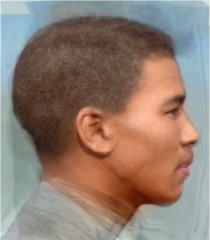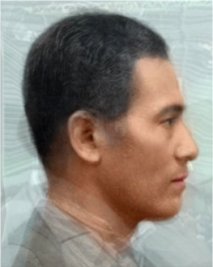|
Much less prominent than the cephalic index, but of similar anthropological value, is the height-length index. It measures the skull height in relation to skull length. The variation on the individual level within populations is usually greater than in the cephalic index, but the height-length index is much less affected by the environment. Thus, processes such as (de-)brachycephalisation hardly alter the height-length index.
The world's average height-length index lies around values of 74. It may get as low as 67 in population means and as high as 80 in others.
On this site, the height-length index is divided into three categories: chamaecrany (low skulls), orthocrany (medium-high skulls), and hypsicrany (high skulls).
On living individuals, the terms chamaecephaly, orthocephaly, and hysicephaly may be used alternatively, but since it is much harder to take the measurement on living individuals than on the skull, the ending "-cranic" is preferred here.
All continents have high-skulled and low-skulled groups.
High-skulled groups are often (but not always) characterised by a flat occiput, whereas low-skulled groups often show a protruding occiput.
The maps show regions where a specific height-length index category is dominant in population means. However, on the individual level, other categories may appear in the black areas as well.
|





